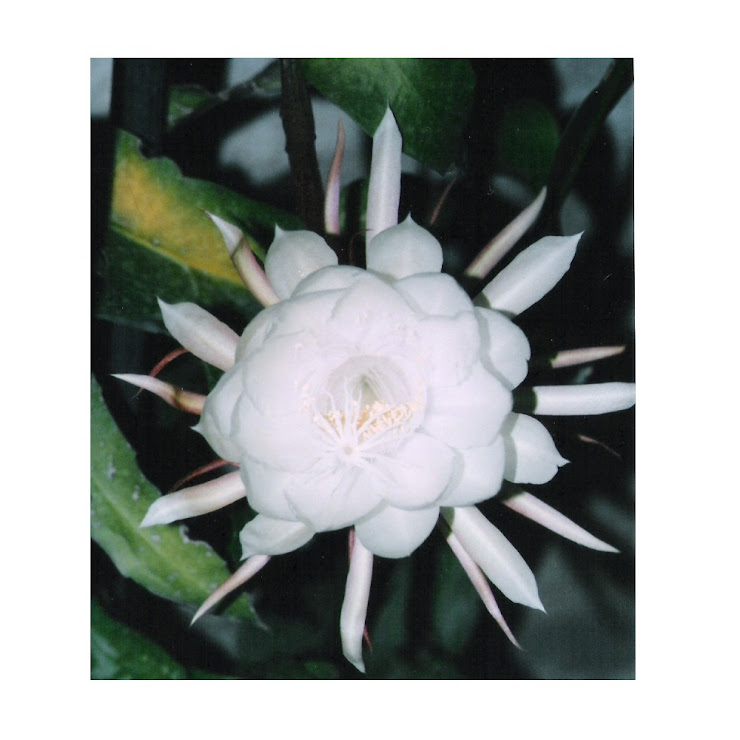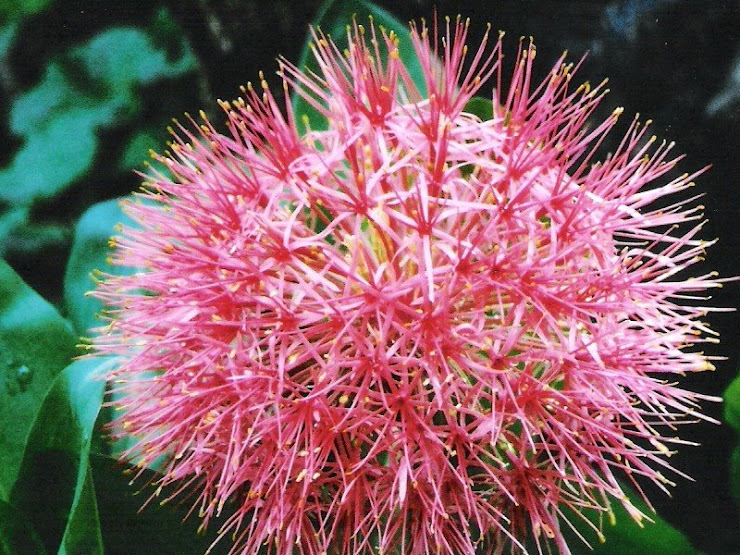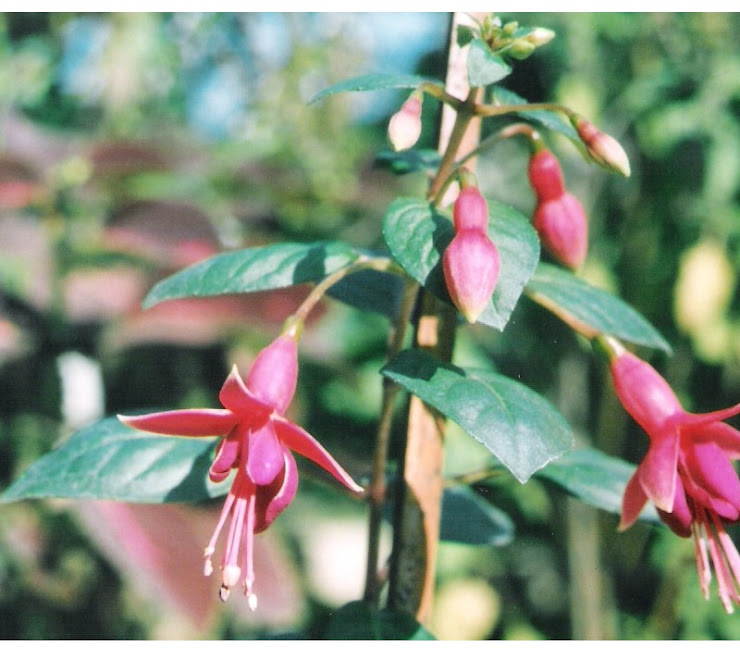Kachnar is the local Indian name for a variety of medium size deciduous trees
of the Bauhinieae plant family found in Haryana. The botanical name of Kachnar
being bauhinia, important tree members thereof are bahanmia variegate, B.
retusa, B. Malabarica, B. racemosa, etc. As these trees have a lot of
similarity we take B. variegata, the Kachnar proper, as a representative of
this group. The Kachnar tree is also known by local names like Karal, Kanalla,
Kandla, etc. It is an ornamental tree with drooping branches. It produces a
rich harvest of mauve and white blossoms, which resemble orchid flowers, in
February-March.
Bauhinia tree also known as Mountain
Ebony, Purple Orchid tree or simply Orchid tree is an excellent
specimen tree that you can grow in your landscapes, lawn or backyards. It is a
hardy and fast growing tree and produces spectacular flowers of magenta, mauve,
pink or white hues with crimson marking during the flowering season that
usually occurs in spring/summers. When the orchid tree is in bloom, it spreads
a delicate fragrance all around. Orchid tree belongs to the Fabacea family was
named Bauhinia after 16th Century herbalists Jan and Caspar Bauhin who were
twin-brothers.
Indian subcontinent has a good representation of these nearly akin trees and or shrubs. About 12 species of this genus are found in India. In addition, about 30 members of the group are climbers. These plants are easily recognized by the peculiar shape of their leaves, each constituting of two identical halves, folded at the midrib. Open the fold and spread the two halves on a plain surface, the figure so projected would look like the impression of a camel’s foot.
Starting from Burma in the East, this plant has its natural habitat almost up to Afghanistan in the West. It starts from the foot of the middle Himalayas, is found growing in suitable locales in southern states too. Kachnar grows best at altitudes ranging from 300 m to 1,000 m.
Kachnar comes up naturally in a good number and with a comparative ease, both in forests as well as agricultural holdings. It bears beautiful, white to pinkish flowers in the early spring, when the tree, being deciduous, is more or less leafless. Young buds of the Kachnar flowers are picked for a variety of tasty broth and pickles. The leaves form a very potent fodder. These are generally lopped, economically and systematically for milch cattle.
The plant bears pod-like fruit during early summer. These become red on ripening by beginning of autumn, when seed can be collected for nursery operations, where necessary. The Kachnar tree has nearly half-an-inch thick bark, dark brown in color, having vertical cracks. When given a cut the cambium dispels a gum having limited medicinal value, rich in proteins, but seldom exploited commercially.
Bauhinias as a genus are beautiful flowering plants. Various species flower at different times of the year. Accordingly, different species have been planted in a particular avenue at the Forest Research Institute, Dehra Dun, in such a scheme that the stretch has one bauhinia or the other in inflorescence for most part of the year.
Kachnar wood is red in color, with red and or black streaks near the core. Weighing nearly 22 to 25 kg per cubic foot, it’s fairly hard in texture and is generally used for agricultural implements, in addition to firewood. The Kachnar is a good species for planting in open wastes as well as vacant dividing butts and bunds of agricultural holdings. The new crop can be raised by direct sowing of the seed before monsoon or by raining seedling in polythene bags in a central nursery having irrigation facility.
To promote the planting of Kachnar tree, the government forest departments provide Kachnar seedlings at subsidized rates. Accordingly, people interested in covering their fallow land, having rich fodder for their dairy cattle, or beautifying their drive-ways and landscape or otherwise enriching the environment, should grow this species of considerable economic value.
Tree
Planting and Care is a holy act. One tree is equated to 10 children in Indian
scriptures. Here are some tips towards creating a greener world:
1. SPACING OF TREES
1. SPACING OF TREES
Trees
are gregarious in nature, i.e. they prefer growing together as they assist each
other mutually in many ways. So our effort would be not only to cover more area
for tree plantation but also to plant more trees in a given area.
There are two aspects of tree space: above and below the ground.The above ground space is more obvious for e.g. tall trees should not be placed where high tension wires are running overhead. Underground space is also as important and medium sized trees should be planted at least at a distance of 4 meters from each other and bigger ones at 8 meters from each other and 5 meters away from buildings foundations.
There are two aspects of tree space: above and below the ground.The above ground space is more obvious for e.g. tall trees should not be placed where high tension wires are running overhead. Underground space is also as important and medium sized trees should be planted at least at a distance of 4 meters from each other and bigger ones at 8 meters from each other and 5 meters away from buildings foundations.
2.
DIRECTION OF PLANTING TREES
The
trees should be planted especially on the south and south - west sides of the
building. This would give shade during summers. Large growing species are
particularly desirable at rearwards.
3.
WHEN TO PLANT TREES
The
period of planting depends upon the species, region, availability of irrigation
facilities, rainfall of the region, etc. Winter is the best time for planting
deciduous trees as they are dormant at this period and hence less likely to
suffer from damage. For evergreen and semi-deciduous trees, rainy season is the
best time for planting. Trees may be planted during the following periods:
During
Spring: That is January and February. At this time all the factors (especially
the temperature), required for tree growth are present. Thus, this is a good
time for young saplings to be planted.
At
the onset of Monsoons: For most species and most areas, planting is carried out
during monsoons. It is advisable to start planting work immediately after a
good shower and when the ground is well moistened to the depth of planting.
Thereafter any delay should be treated as loss of growing season.
4.
PLANTING CLIMBERS AND BUSHES
Places
where trees cannot be planted can be covered with bushes and smaller plants.
Another possibility is to have Climbers (plants that need support to grow),
which require very little space to grow but provide a large leafy area. They
can brighten up the boundary walls, arches, pillars and cover the ugly sites.
5.
AFTER CARE
The
after care of the saplings till they reach a certain age and height is
essential. Though lakhs of saplings are planted by our government each year, a
lucky few blossom as big trees. Once the rains cease, the saplings need to be
watered regularly, protected from cattle and pests and insects, given manure.
It will definitely help if residents take up watering in their nearby areas.
6.
WHAT SPECIES TO PLANT?
Have you ever observed the trees around your home, or while traveling. An inclination of planting a few limited varieties is clearly evident. As a result we have more number of Gulmohars, Ashokas, Alstonias, Acacia, Papri and that too at the cost of other species. All tree species have some beauty or characteristic, but let us not be overwhelmed by just a few at the cost of losing others.
Have you ever observed the trees around your home, or while traveling. An inclination of planting a few limited varieties is clearly evident. As a result we have more number of Gulmohars, Ashokas, Alstonias, Acacia, Papri and that too at the cost of other species. All tree species have some beauty or characteristic, but let us not be overwhelmed by just a few at the cost of losing others.
Your
city can have more than 150 species of trees growing well, but not more than 30
species are found growing commonly. Thus we must plant a variety of species and
not restrict to few species. Nature has of course provided us with a wide
variety and here is a few which we can grow easily.
This
monsoons if you are thinking of making your space green, below are a few tree
species you can opt for rather than just the ones which grow commonly. We
suggest planting those trees which absorb pollution, give shade during summers,
are strong and easy to grow and are native to the environment.
The
Kachnar tree family is given below:
Kingdom:
Planate
Division: Magnoliophyta
Class: Magnoliopsida
Order: Fabales
Family: Fabaceae/ Leguminosae
Subfamily: Caesalpinioideae
Tribe: Cercideae
Genus: Bauhinia
Species: B. variegata
Common name: Orchid Tree, Mountain-ebony, Raktakanchan (Bengali, India), Kachnar (Hindi, India), Chingthrao (Manipuri, India), Orgideeboom (Africa), Arbre de Saint-Thomas (French), Buntfarbene Bauhinie (German), Arvore-de-Sao-Thomaz (Portuguese).
Native: (Southeastern Asia), from Southern China west to India.
Kachnar has three varieties (red, white and mauve) depending upon the colour of its flowers.
Food value: The unopened flowers are plucked and used in making an exotic vegetable dish. The unopened flowers are boiled for 10 minutes, the water is drained and then these are stir fried in an open pan with zeera. Seasoned with gram masala, haldi, and coriander powder.
Division: Magnoliophyta
Class: Magnoliopsida
Order: Fabales
Family: Fabaceae/ Leguminosae
Subfamily: Caesalpinioideae
Tribe: Cercideae
Genus: Bauhinia
Species: B. variegata
Common name: Orchid Tree, Mountain-ebony, Raktakanchan (Bengali, India), Kachnar (Hindi, India), Chingthrao (Manipuri, India), Orgideeboom (Africa), Arbre de Saint-Thomas (French), Buntfarbene Bauhinie (German), Arvore-de-Sao-Thomaz (Portuguese).
Native: (Southeastern Asia), from Southern China west to India.
Kachnar has three varieties (red, white and mauve) depending upon the colour of its flowers.
Food value: The unopened flowers are plucked and used in making an exotic vegetable dish. The unopened flowers are boiled for 10 minutes, the water is drained and then these are stir fried in an open pan with zeera. Seasoned with gram masala, haldi, and coriander powder.
Medicinal
value: Its leaves bark and fruits have medicinal properties. Right from ancient
times, Kachnar has been famous for its curative effect on the enlargement of
lymph glands. Acharyas say that it is an excellent cleanser of wounds and
killer of intestinal worms. The green buds and bark of kachnar are good
astringents.
Its decoction is also used for curing scrofula (glandular swelling), ulcers and skin diseases.
The usual dosage of dried and crushed parts of kachnar is three to six grammes. Fifty milliliters of its decoction can be consumed. Overdose can cause nausea, which can be set right by taking a little black salt along with lemon juice.
The white flowers of Kachnar are used for worshipping (Lakshmi) the goddess of wealth.
It is a very popular ornamental tree in subtropical and tropical climates, grown for its scented flowers. In some areas it has become naturalised and invasive.
Its decoction is also used for curing scrofula (glandular swelling), ulcers and skin diseases.
The usual dosage of dried and crushed parts of kachnar is three to six grammes. Fifty milliliters of its decoction can be consumed. Overdose can cause nausea, which can be set right by taking a little black salt along with lemon juice.
The white flowers of Kachnar are used for worshipping (Lakshmi) the goddess of wealth.
It is a very popular ornamental tree in subtropical and tropical climates, grown for its scented flowers. In some areas it has become naturalised and invasive.
An orchid
tree in full bloom with its sweet scent on a winter evening is simply a lovely
retreat.










4 comments:
Orchid flowers are much more vanity filled then regular gardens. I can't wait to see pics when your garden has reached its climax!
-Samudaworth Tree Service
Hi
Does this tree grow in cold countries? I Live in England and I love Kachnar very much and would like to grow here.
Also can you please give me information where can I find seeds for this>
Many Thanks
Hi
Can I grow Kachnar in England
Where can i find seeds
Many Thanks
Dear Funty,
Regret I could not come back to you earlier since I was out of station in a location where we do not have internet.
This plant is a tropical plant and I do not think it could survive the cold British climate.
You could try some of the seed/plant suppliers in England like Park Seeds or Suttons.
Regards.
Post a Comment